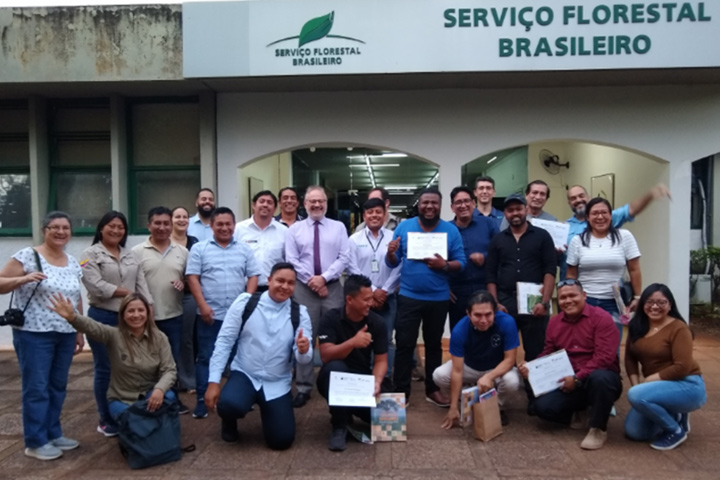Nowadays, one of the main challenges for the preservation of forests in South America is the capacity to control the exploitation, transport and trade of tropical timber species. The growing demand for wood has intensified the pressure on key species, significantly impacting on forests structure, especially in the Amazon region. In this sense, it is extremely important to develop new techniques and tools to carry out this control to achieve the necessary sustainability. In this course, thirty participants attended the face-to-face course in Brasilia, Brazil, including sixteen representatives of ACTO (Amazon Cooperation Treaty Organization) Member Countries and others from the Brazilian Institute of the Environment and Renewable Natural Resources (Ibama), LPF, the Federal Police and the University of Brasilia, Brazil.
This training course was taught to strengthen the tools developed by LPF/SFB for the control and identification of timber species. It also offered an opportunity to share experiences and strengthen partnerships among governments and investigation and control agencies in the Member Countries of ACTO. The course were given by technicians from LPF, along with the contributions of guest speakers. In addition to acquiring knowledge about the anatomical identification of wood, the electronic key for the identification of timber species, and the application technique of NIRS technology and equipment, the attendees visited the facilities of LPF during the course.

Participants of the wood identification course getting to know the Harry Van der Sloten Xylorium
from the Forest Products Laboratory in Brasilia, Brazil

Lecture on wood anatomical identification given at the headquarters of the Amazon Cooperation Treaty Organization (ACTO)

Lecture on practice of wood anatomical identification

Demonstration of using NIRS Technology to identify Amazonia native woods

Training on obtaining increment core from standing tree

Group photo of course participants from eight South and Central American countries


